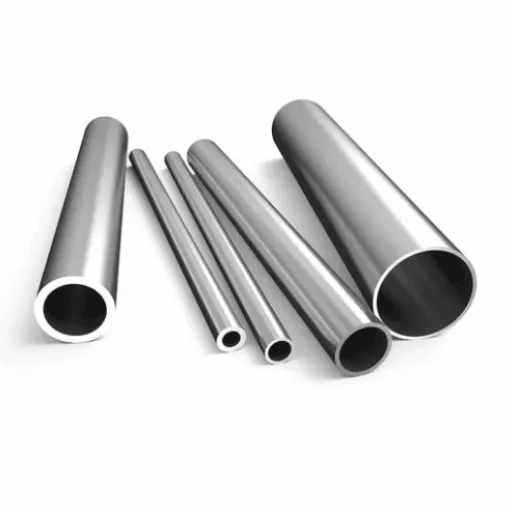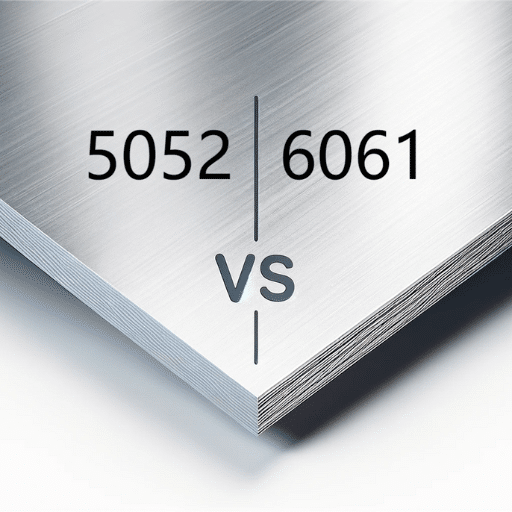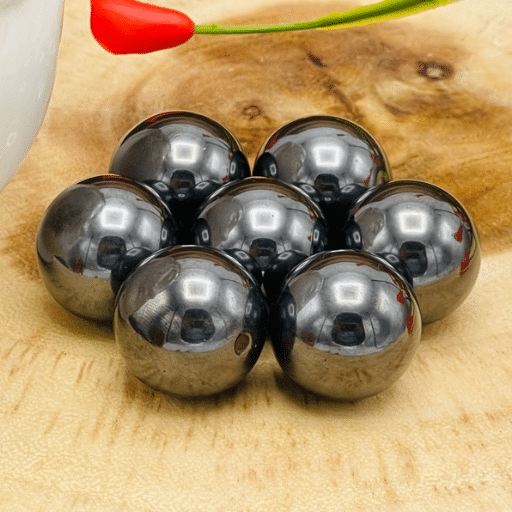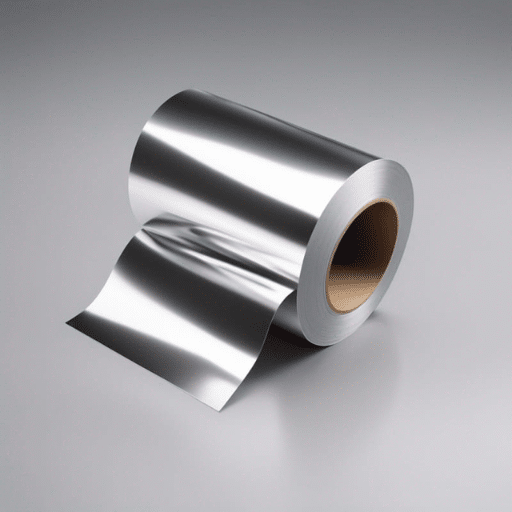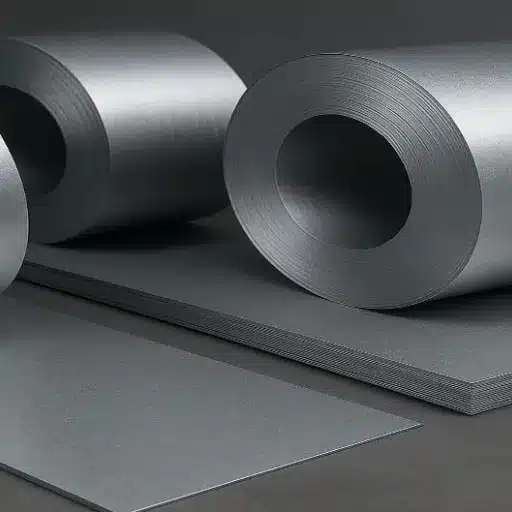Choosing the right type of stainless steel for your needs can be a critical decision, particularly when it comes to 430 and 304 stainless steel. Both materials are widely used in various industries and applications, but they differ significantly in terms of composition, characteristics, and performance. This guide aims to unravel the key distinctions between these two types of stainless steel, helping you make an informed decision based on your specific requirements. Whether you’re prioritizing corrosion resistance, cost-effectiveness, or weldability, understanding these differences will ensure you select the optimal material for your project. Read on to explore the unique properties of 430 and 304 stainless steel and discover which one aligns best with your application.
What Are the Main Characteristics of 304 Stainless Steel?
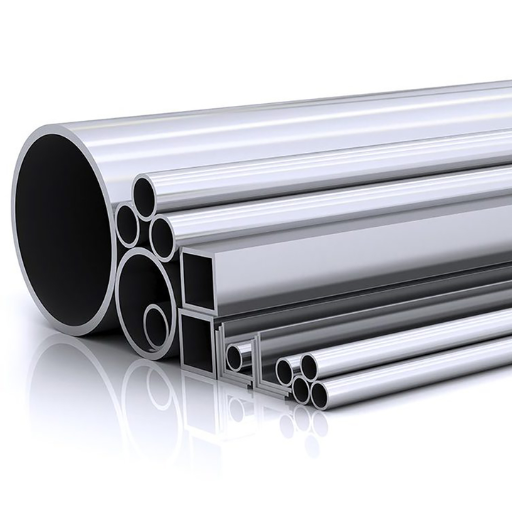
304 stainless steel is an austenitic alloy known for its excellent corrosion resistance and durability. It is composed primarily of iron, with significant amounts of chromium (18–20%) and nickel (8–10.5%), which enhance its strength and resistance to rust. This material is non-magnetic, easy to clean, and highly versatile, making it suitable for a wide range of applications, including kitchen equipment, medical devices, and architectural components. Additionally, 304 stainless steel offers good weldability and formability, allowing it to be used in various fabrication processes without compromising structural integrity.
Understanding the Chemical Composition of 304
304 stainless steel is predominantly composed of iron, combined with chromium (18–20%) and nickel (8–10.5%) as its primary alloying elements. The presence of chromium is particularly essential, as it forms a passive oxide layer on the surface, providing excellent corrosion resistance. Nickel, on the other hand, enhances the ductility and toughness of the material, particularly in low-temperature environments.
Other trace elements include manganese (≤2.0%), silicon (≤1.0%), and carbon (≤0.08%), all of which contribute to the alloy’s specific mechanical properties and durability. For example, manganese aids in deoxidizing the material during production, while carbon improves tensile strength within controlled limits. Additionally, this grade typically contains a small amount of phosphorus (≤0.045%) and sulfur (≤0.03%), which are strictly controlled to maintain high weldability and machinability.
By balancing these elements within the specified ranges, 304 stainless steel achieves its remarkable combination of corrosion resistance, strength, and versatility, making it suitable for diverse industrial and commercial applications.
Exploring the Corrosion Resistance of 304 Stainless Steel
The corrosion resistance of 304 stainless steel is attributed to the presence of chromium (typically 18-20%) within its chemical composition, forming a passive oxide layer on the surface that prevents oxidation and damage from environmental exposures. This protective layer enables 304 stainless steel to resist common corrosive agents like moisture, atmospheric conditions, and many acidic or alkaline chemicals. The nickel content (8-10.5%) enhances this resistance by stabilizing the austenitic microstructure, ensuring durability even under thermal and mechanical stresses.
304 stainless steel performs exceptionally well in environments with chloride concentrations lower than 200 parts per million (ppm). However, exposure to higher levels of chlorides, such as in marine or heavily industrial settings, may lead to pitting or crevice corrosion over time. To mitigate such risks in harsher conditions, design modifications or the use of a higher-grade stainless steel, such as 316, is recommended due to its added molybdenum.
The alloy’s resistance is influenced by temperature as well. While 304 stainless steel maintains its corrosion resistance at moderate temperatures, prolonged exposure to high-temperature environments, especially between 800°F and 1500°F (roughly 427°C to 815°C), may cause sensitization. During sensitization, chromium carbides form along grain boundaries, depleting chromium near those areas and potentially reducing resistance to intergranular corrosion unless post-weld heat treatments, such as annealing, are applied.
This exceptional combination of corrosion resistance, cost-effectiveness, and versatility makes 304 stainless steel one of the most widely utilized materials for applications ranging from food processing and chemical handling to architectural components and medical devices. Nevertheless, selecting the appropriate grade of stainless steel based on specific environmental factors and stress conditions remains critical to long-term performance.
Applications of 304 Stainless Steel in Various Industries
1.Food and Beverage Industry: The outbreak of COVID-19 pandemic has increased the importance of hygiene in daily life. Industries such as food and beverage require extreme hygiene and as a result, 304 stainless steel is used for fabricating almost all the equipments due to its superb resistance against corrosion and its ability to withstand chemicals. It is used for tanks, utensils, conveyor belts, and all other machinery.
2.Medical Industry: Medical equipment, instruments, and even parts of the hospital are made using 304 stainless steel due to its resistance to biological contamination, sterilization, and compatibility with the body’s tissues and living cells.
3.Automotive and Transportation: Components such as trims, heat exchangers, and exhaust systems require high durability as well as high resistance to heat which is why 304 stainless steel is used.
4.Chemical and Pharmaceutical Industries: In medical laboratories, industries which utilize extreme chemical purity and stability require pipes and storage vessels which can outlast a large array of chemicals. As a result, these are made using 304 stainless steel.
5.Architectural and Construction Sector: Due to the high durable finish that can withstand and resist harsh weather conditions, buildings can be fitted with 304 stainless steel handrails, walls, and even structural supports.
How Does 430 Stainless Steel Compare?
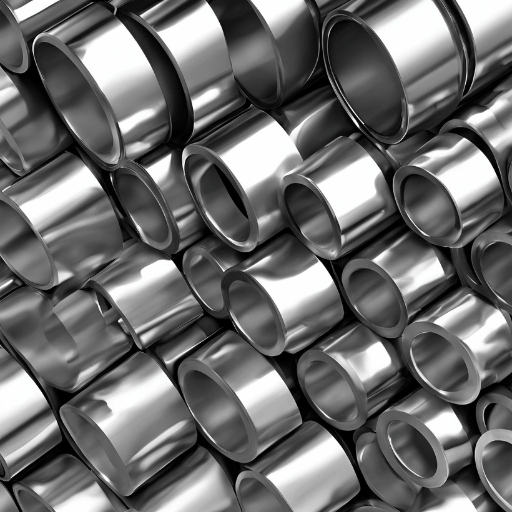
430 stainless steel, while differing from 304 stainless steel in composition, offers unique advantages in certain applications. It is a ferritic stainless steel, meaning it contains a higher concentration of chromium but no nickel, making it more cost-effective. This grade exhibits excellent corrosion resistance in mild environments and is particularly suited for interior or decorative uses. Its magnetic properties and high thermal conductivity make it ideal for induction cooking equipment and heat-resistant applications. However, 430 stainless steel is less ductile and less resistant to severe corrosion compared to 304, which limits its utility in harsh or highly corrosive environments. Thus, 430 stainless steel provides a practical, affordable alternative for specific uses where extreme strength and corrosion resistance are not critical.
The Chemical Composition of 430 Stainless Steel
The chemical composition of 430 stainless steel is primarily characterized by its high chromium content, which provides the alloy with its corrosion resistance and durability. The typical composition includes approximately 16.0% to 18.0% chromium, offering excellent oxidation resistance. Carbon content is relatively low, usually around 0.12% maximum, ensuring improved weldability and ease of fabrication. Other key elements include manganese (up to 1.00%), silicon (up to 1.00%), and trace amounts of phosphorus (up to 0.040%) and sulfur (up to 0.030%). Additionally, 430 stainless steel typically contains negligible amounts of nickel, distinguishing it from austenitic grades like 304. This precise balance of elements makes 430 stainless steel suitable for structural applications that require cost efficiency and moderate corrosion resistance without the need for extensive mechanical processing.
Examining the Magnetic Properties of 430
Type 430 stainless steel is classified as a ferritic stainless steel, which inherently possesses magnetic properties due to its body-centered cubic (BCC) crystal structure. Its magnetism is primarily attributed to the high chromium content (16.00-18.00%) and the absence of significant nickel, which distinguishes it from non-magnetic austenitic grades like 304. Ferritic stainless steels like 430 exhibit strong magnetic permeability and retain magnetization even under weaker magnetic fields, making them suitable for electromagnetic applications.
A key technical parameter when evaluating the magnetic properties of 430 is its relative permeability (µr), which typically ranges from 500 to 600 under normal conditions, although exact values can vary slightly depending on processing and microstructure. Another critical attribute is its coercive force, often measured in the range of 90 to 120 Amps/m, which reflects its resistance to demagnetization. These characteristics make 430 stainless steel well-suited for components such as solenoids, magnetic cores, and housings in electrical systems, where moderate corrosion resistance coupled with strong magnetic response is required.
It is important to note that the magnetic properties can be influenced by factors such as cold working and annealing processes. Cold working tends to enhance magnetic strength due to induced stress and increased dislocation density, while annealing can reduce magnetic performance slightly by relieving stress and refining the material’s microstructure.
Where is 430 Stainless Steel Typically Used?
430 stainless steel constituents are largely preferred where resistance to corrosion is needed, albeit not reinforced like in higher grade stainless steels. It is particularly popular in kitchen appliances which include range hoods, oven liners, and splash back due to its moderate heat resistance and aesthetic beauty, making it appealing to look at. He also uses it for automotive trims, architectural parts, and industrial machines where these properties in addition to its magnetic characteristics make it cost effective. This type kf material works well in conditions with lower concentrations of harsh chemicals or salt water.
What is the Difference Between 430 and 304 Stainless Steel?

The primary difference between 430 and 304 stainless steel lies in their composition and properties. Type 304 is an austenitic stainless steel containing both chromium and nickel, which provide superior corrosion resistance and greater formability, making it ideal for demanding environments, including those exposed to moisture and harsh chemicals. On the other hand, Type 430 is a ferritic stainless steel, which contains only chromium and lacks nickel, resulting in reduced corrosion resistance compared to 304. However, 430 is more affordable, offers good oxidation resistance under moderate heat, and is magnetic, which can be advantageous for specific applications. Choosing between these two grades depends on the operational environment, budget considerations, and specific functional requirements.
Corrosion Resistance: 304 vs 430
304 offers superior corrosion resistance due to its higher nickel content, while 430, though less resistant, provides adequate performance under less aggressive conditions.
|
Parameter |
304 |
430 |
|---|---|---|
|
Chromium (%) |
18-20 |
16-18 |
|
Nickel (%) |
8-10.5 |
0 |
|
Corrosion Level |
High |
Moderate |
|
Heat Tolerance |
Higher |
Moderate |
|
Magnetic |
No |
Yes |
|
Cost |
Higher |
Lower |
|
Use Case |
Harsh env. |
Mild env. |
Comparing the Mechanical Properties
The mechanical properties of 304 and 430 stainless steels differ in tensile strength, yield strength, elongation, and hardness.
|
Property |
304 |
430 |
|---|---|---|
|
Tensile (MPa) |
~515 |
~450 |
|
Yield (MPa) |
~205 |
~310 |
|
Elongation (%) |
~40 |
~22 |
|
Hardness (Brin) |
~201 |
~183 |
|
Ductility |
High |
Low |
|
Formability |
Excellent |
Moderate |
304 stainless steel is marked by its superior ductility and formability, making it ideal for complex shapes. Conversely, 430 demonstrates higher yield strength but lower elongation, favoring less intricate applications.
Benefits of Austenitic vs Ferritic Stainless Steels
Austenitic stainless steels offer superior corrosion resistance, exceptional toughness at low temperatures, and excellent weldability, whereas ferritic stainless steels are cost-effective, provide better thermal conductivity, and possess higher resistance to stress corrosion cracking.
|
Benefit |
Austenitic |
Ferritic |
|---|---|---|
|
Corrosion |
Excellent |
Moderate |
|
Toughness |
High |
Moderate |
|
Weldability |
Excellent |
Limited |
|
Cost |
Higher |
Lower |
|
Conductivity |
Moderate |
Better |
|
Stress Cracking |
Lower resistance |
Higher resistance |
|
Magnetic |
Non-magnetic |
Magnetic |
|
Temp Resistance |
Excellent (high/low) |
Moderate |
Both types of stainless steels excel in specific scenarios, with austenitic grades being best suited for applications demanding superior durability and corrosion resistance, while ferritic grades are ideal for environments requiring cost-efficiency and thermal performance.
Is 430 vs 304 Stainless Steel Better for Your Needs?
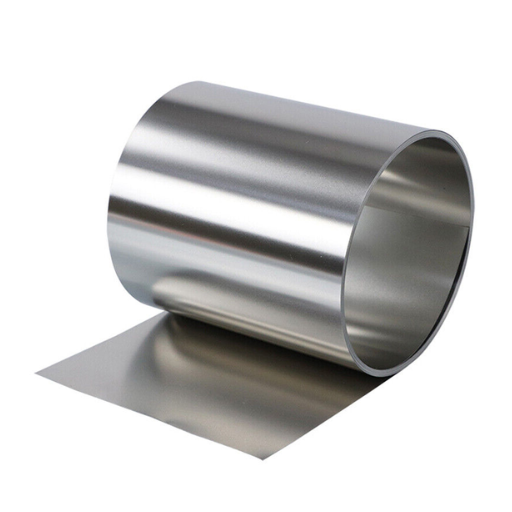
When deciding between 430 and 304 stainless steel, the choice depends on your specific application requirements. If corrosion resistance, particularly in harsh or marine environments, is a priority, 304 stainless steel is the superior option due to its higher chromium and nickel content. However, if cost and thermal performance are more critical, 430 stainless steel provides a more economical choice while offering adequate resistance for less demanding environments. Evaluate factors such as operating conditions, budget, and long-term performance requirements to determine the best fit for your needs.
Cost Considerations: 304 vs 430
When evaluating cost considerations between 304 and 430 stainless steel, the primary factors include raw material cost, corrosion resistance, durability, machinability, and overall application suitability.
|
Parameter |
304 |
430 |
|---|---|---|
|
Cost |
Higher |
Lower |
|
Corrosion |
Excellent |
Moderate |
|
Durability |
High |
Lower |
|
Machinability |
Moderate |
Higher |
|
Applications |
Harsh/Marine |
Mild/General |
Choosing the Right Grade of Stainless Steel
When selecting the right grade of stainless steel, I consider the specific requirements of my application. If I need excellent corrosion resistance, especially in marine or highly acidic environments, I would choose 304 stainless steel due to its superior performance in these conditions. However, if the project involves general-purpose applications where cost efficiency is a priority, 430 stainless steel is a practical choice, as it is more economical and offers sufficient durability for non-harsh environments. Additionally, if machinability is a critical factor, 430 has an advantage, but for applications demanding higher durability and longevity, 304 remains the optimal choice. Balancing these factors ensures that the material aligns with the operational demands and budget constraints effectively.
Can 304 and 430 Stainless Steel be Welded?
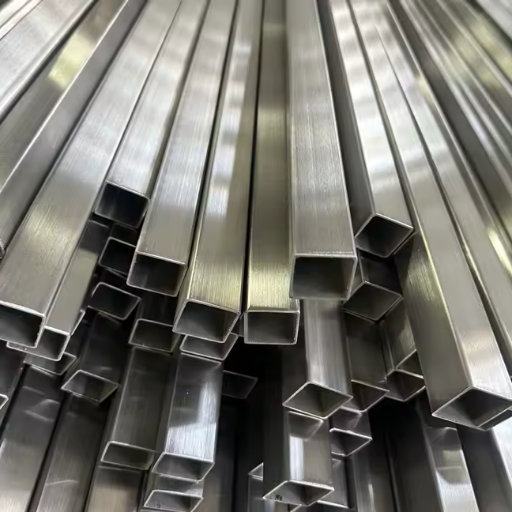
Both 304 and 430 stainless steels are weldable, but the characteristics of their welding differ due to their compositions. 304 is an austenitic grade which means it is highly weldable by conventional means: TIG, MIG, and stick welding can all be done with little to no chance of cracking or distortion. Pre-heating is almost never required, and post-weld heat treating is optional depending on the use of the component. The situation is different for 430 stainless steel which is a ferritic grade; its weldability is poor due to the increased potential of microstructural changes such as grain growth and brittleness in the heat-affected zone. For better performance and durability of the welded joint, these procedures are essential in order to avoid the aforementioned issues. Annealing increases the toughness of the heat-affected zone while improving the strength of welds and uniting the materials, thus enhancing overall material resistance.
Challenges in Welding 304 Stainless Steel
When welding 304 stainless steel, the primary challenges include the risk of hot cracking and distortion due to thermal expansion. To address these issues, I ensure proper heat input control during the welding process and make use of fixtures to minimize distortion. Another concern is carbide precipitation, which can result in decreased corrosion resistance, especially in the heat-affected zone. To mitigate this, I often opt for low carbon variants like 304L or use filler metals with higher chromium and nickel content. Additionally, proper shielding with inert gases like argon or an argon-helium mixture is crucial to preventing oxidation and achieving a clean, strong weld.
Welding 430 Stainless Steel: What You Need to Know
430 stainless steel is a ferritic alloy widely used due to its good corrosion resistance and cost-effectiveness. However, its unique properties require careful handling during the welding process to avoid structural and performance issues.
When welding 430 stainless steel, the primary challenges include its higher susceptibility to grain growth and reduced ductility in the weld and heat-affected zones (HAZ). To address this, proper heat management is critical. Minimize excessive heat input to prevent grain coarsening, which can weaken the weld. Additionally, preheating is generally not required, but slow and controlled cooling is essential to avoid excessive brittleness.
Filler metals should be selected based on the application’s requirements. A common choice is to use type 308L filler for somewhat higher corrosion resistance and weld strength. However, in some cases, matching 430 filler may be appropriate for maintaining similar composition throughout the structure.
Shielding gases play a vital role in producing a clean weld. For 430 stainless steel, pure argon or an argon-CO2 blend is typically recommended. This reduces oxidation and promotes a cleaner weld surface. Always ensure proper gas flow rates and coverage.
Post-weld treatments, such as stress relief or annealing, can help restore ductility if necessary, although this is typically application-dependent. Overall, adhering to these techniques ensures stronger, more reliable welds for 430 stainless steel applications.
Reference Sources
- Kloeckner Metals: The Difference Between 430 vs 304 Stainless Steel
- Thyssenkrupp Materials: Difference Between Stainless Steel 304 and 430
- Essentra Components: 304 vs. 430 stainless steel: what’s the difference?
- Reid Supply: Stainless Steel 304 Vs 430 – What Is The Difference?
- Royal Welding Wires: How To Choose Between 304 And 430 Stainless Steel
Frequently Asked Questions (FAQs)
Q: What are the main differences between grade 430 and grade 304 stainless steel?
A: Grade 430 is a ferritic stainless steel grade, known for being less expensive and magnetic, whereas grade 304 is an austenitic stainless steel, widely used for its excellent corrosion resistance and non-magnetic properties. The nickel in 304 makes it more durable and suitable for diverse applications.
Q: Is grade 430 stainless steel magnetic?
A: Yes, grade 430 stainless steel is magnetic because it is a ferritic stainless steel grade. This is in contrast to grade 304, which is non-magnetic due to its austenitic structure.
Q: Why is 304 stainless steel considered more widely used than grade 430?
A: Grade 304 stainless steel is more widely used due to its superior corrosion resistance, versatility, and ability to withstand high temperatures compared to 430. Its austenitic structure, which includes nickel, makes it suitable for a broader range of applications.
Q: How do the properties of 304 stainless steel compare to 430?
A: The properties of 304 stainless steel include excellent corrosion resistance, non-magnetic nature, and high ductility, making it ideal for various applications. In contrast, 430 stainless steel is magnetic, less expensive, and provides moderate corrosion resistance but is limited in high-temperature applications.
Q: What are the applications of 304 stainless steel sheet?
A: 304 stainless steel sheets are commonly used in kitchen equipment, chemical containers, architectural paneling, and automotive parts due to their excellent durability, corrosion resistance, and aesthetic appeal.
Q: Is grade 304 more expensive than grade 430?
A: Yes, grade 304 is generally more expensive than grade 430. The higher cost is due to the presence of nickel in the alloy, which enhances its corrosion resistance and overall performance in various applications.
Q: Can I use grade 430 stainless steel in place of 304 for outdoor applications?
A: While grade 430 can be used for some outdoor applications, it may not be the best choice if high corrosion resistance is required. Grade 304, with its superior corrosion resistance, is often recommended for outdoor use where durability and long-term performance are critical.
Q: What are the common grades of stainless steel beyond 304 and 430?
A: Beyond grades 304 and 430, other common grades of stainless steel include 316, known for its enhanced corrosion resistance due to molybdenum, and 410, a martensitic grade known for high strength and moderate corrosion resistance. Each grade is suited to specific applications based on its properties.
Q: How is carbon steel different from grade 304 stainless steel?
A: Carbon steel differs from grade 304 stainless steel in that it typically has a higher carbon content, making it stronger but more prone to rust and corrosion without protective coatings. Stainless steel, particularly grade 304, offers superior corrosion resistance and is ideal for applications where exposure to moisture is a concern.

